Best nutrition apps in 2025 you should know about
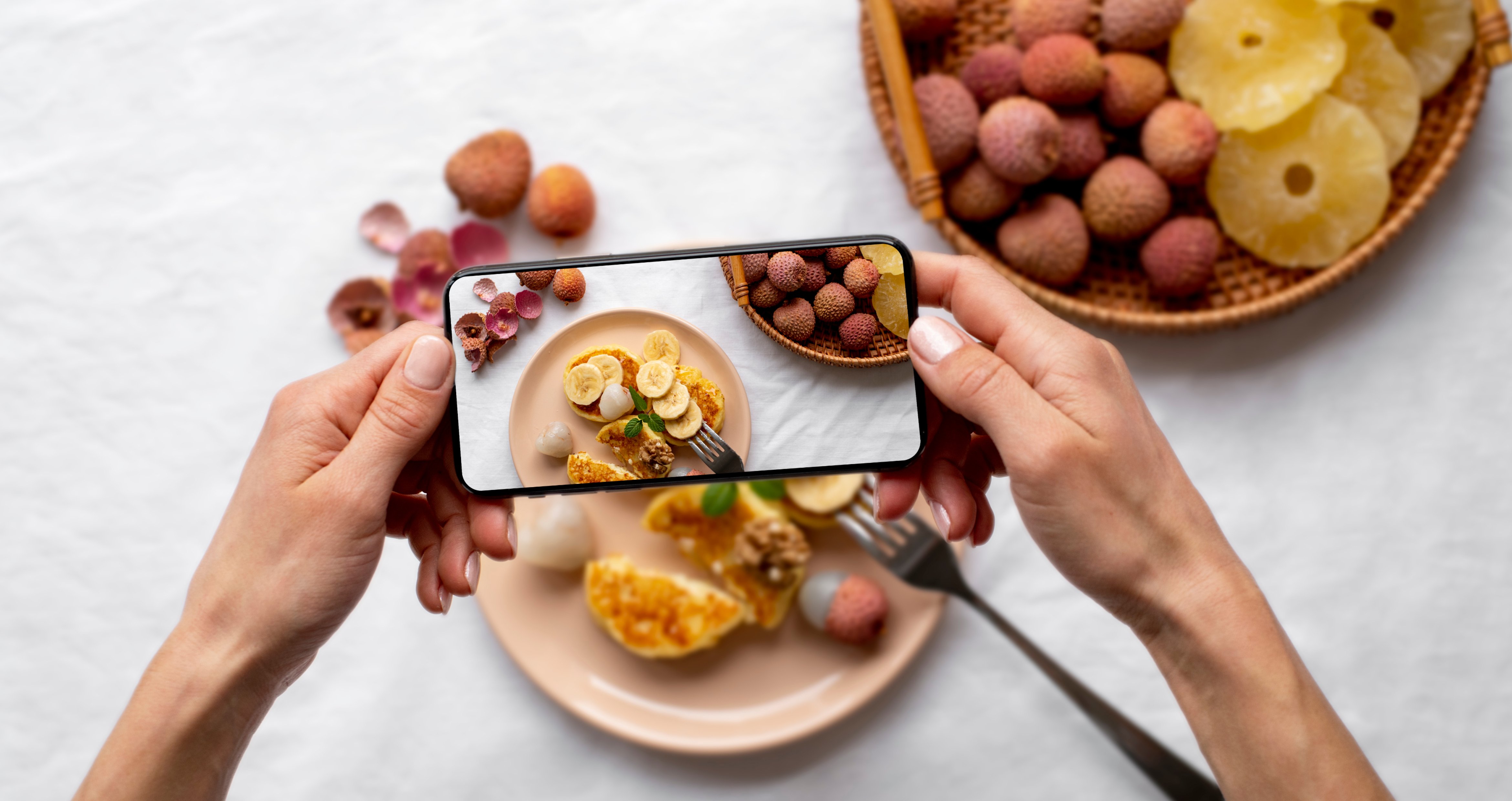
At the heart of this explosive growth lies the integration of AI and machine learning. What once felt like a tedious process of manually weighing your food, searching databases for accurate nutritional information, and logging it into your calorie counter of choice has now evolved beyond the “hardcore” fitness lifestyle into a simple, everyday routine. Today, AI allows you to track your meals with a single photo, generate entire weeks of meal plans based on your profile, and get real-time support from an in-app nutrition coach whenever you need it.
Because of this, full AI adoption has become the main driver of innovation in the category, and marketing campaigns boasting the “AI-powered” label are on the rise.
In this article, we’ll explore how the nutrition app industry reached its current stage and highlight the top apps standing out in a crowded market.
The evolution of nutrition apps into AI-powered platforms
Up until the public release of various AI models, most popular nutrition apps focused on calorie and macronutrient counting, the practice of tracking what you eat by logging food weight and searching an in-app database to reach specific calorie and macronutrient goals for fat loss or muscle gain.
For years, little changed in this dynamic. The value of any calorie counter mainly depended on the size and accuracy of its database, the nutritional approach to macro distribution and retention rewards, interface design and attractiveness, the inclusion of a barcode scanner for packaged foods, and extra community features like forums or friend lists.
With the arrival of AI, innovation in the category accelerated dramatically. In a short time, most apps began training and integrating models such as Gemini, ChatGPT, and Claude into their products, enabling features like food scanners that estimate nutritional information from a simple photo, voice recognition to log meals on the go, AI tools to create foods not included in the database, and chatbots that provide real-time advice, manage app settings, and generate personalized recipes.
Today, the category has a clear direction: leveraging AI to keep innovation moving forward and transforming what was once a simple tool into a full AI-powered nutrition coach in your pocket. However, this evolution has not come without challenges.
Due to the easy access to different AI models, the market has become flooded with low-effort products that mostly rely on food scanners and limited databases. This can be confusing for new users, as many food scanners still require fine-tuning for greater accuracy and tend to perform better in specific contexts. As a result, these apps often fall short in helping beginners develop consistent food-tracking habits.
For this same reason, in the next section, we’ll explore the best nutrition apps that were battle-tested in the pre-AI era and have successfully adapted to integrate this powerful technology in an effective and accessible way.
The 5 best nutrition apps in 2025
Fitia
Fitia was officially launched in LATAM and Spain in 2019, where it quickly rose to become the leading calorie counter and meal planner in the region, competing head-to-head with giants like MyFitnessPal and Cronometer. By 2023, it expanded to the United States and other English-speaking countries, and by 2025, it reached over one million active users worldwide each month.
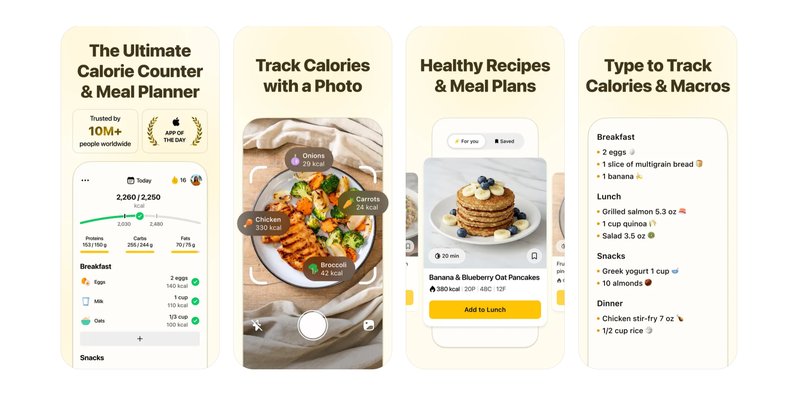
Source: App Store
Fitia’s core value lies in its nutritionist-verified and localized database, which includes millions of foods and thousands of recipes. Building on this foundation, the app delivers a science-based approach to nutrition that combines a calorie counter with an automatic meal planner. This allows users of all experience levels to track what they eat or access personalized meal plans when they’re unsure how to structure their diet.
Today, Fitia has implemented multiple AI features that take full advantage of its main strengths:
- AI Fitia Coach: Provides nutritional insights, personalized advice, and real-time support.
- Food Scanner: Estimates nutritional information from a simple photo.
- Voice Tracking: Lets users log foods and meals through voice input.
- Create Any Food with AI: Generates accurate nutritional data for any food a user can think of.
- Whole-Day Tracking by Writing a List: Allows users to log their entire day of meals simply by typing them out.
Cronometer
Founded as a personal nutrition software project in 2005, Cronometer eventually evolved into a full-fledged nutrition app. Its core value lies in the accuracy of its database and its focus on micronutrients and biometrics, allowing users to track up to 84 vitamins and minerals.
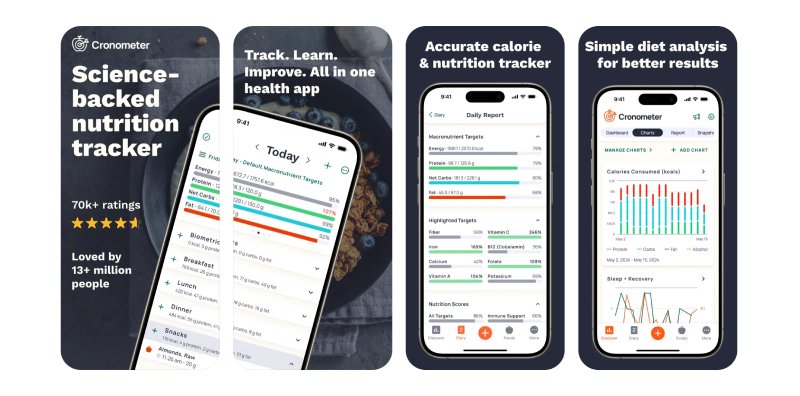
Source: App Store
Interestingly, while tracking accuracy has always been Cronometer’s main priority, the developers have also begun adopting AI tools that trade a bit of precision for greater convenience. Currently, Cronometer includes the following AI-powered features:
- Photo Logging: Uses AI to estimate a meal’s nutritional content from a picture.
- Food Suggestions: Utilizes user data to offer personalized recommendations for improved recipes and food options.
- Water Content Estimation: Estimates water content when it’s not listed on branded product labels.
- Voice Tracking: Tested in beta during 2023, but later discontinued due to user feedback.
MyFitnessPal
Launched to the public in 2005, MyFitnessPal became the go-to platform for calorie tracking throughout the 2010s, adopted by countless bodybuilders and fitness enthusiasts with physique-related goals. Beyond its initial novelty, the app’s core value lay in allowing user-generated entries to be added to its main database, which helped it build one of the largest nutrition databases by 2025.
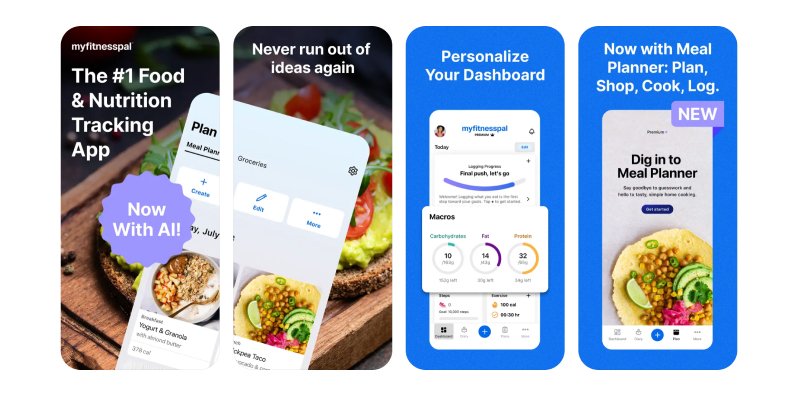
Source: App Store
Like other top players in the category, MyFitnessPal has also introduced multiple AI features in recent years, including:
- AI-Powered Meal Planning: Although not yet implemented, MyFitnessPal plans to launch this feature following its acquisition of the startup Intent earlier this year. It will use machine learning and proprietary algorithms to generate personalized meal plans for users.
- Voice Log: Matches spoken input with food entries in the database and automatically adds them to the plan.
- Meal Scan: Uses AI to estimate a meal’s nutritional content from a picture.
- Food Suggestions: Recommends foods that can improve protein and fiber intake.
- Database Enhancements: Improves search relevance and reduces inaccuracies caused by user-generated entries.
Noom
Noom launched its mobile app to the public in 2016 with a unique value proposition. The platform takes a focused approach to behavioral change and habit development by leveraging the latest findings in psychology and behavioral science.
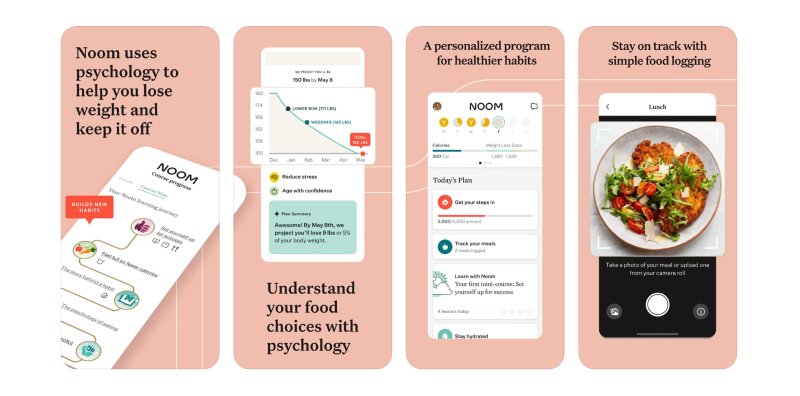
Source: App Store
This holistic approach to weight loss combines all the essential tools for calorie counting with personal coaching, tips, and educational courses, all delivered through the app.
Today, Noom has also joined the AI movement, adding new features and enhancing existing ones:
- AI Personal Health Assistant: Complements the human coaching side of the app by offering 24/7 assistance on various fitness and health topics.
- AI Body Scan: Uses a smartphone camera to create a 3D model and provide a health report, including a visual projection of how users might look after reaching their goals.
- Body Age: Uses AI to compare user data against a large U.S. health database to determine how their metabolic health stacks up against the population.
- Photo Food Logging: Uses AI to estimate a meal’s nutritional content from a picture.
- Text and Voice Food Logging: Matches spoken or written input with food entries in the database and automatically adds them to the plan.
Lifesum
Founded in 2008, Lifesum has built a complete platform that combines calorie tracking with a variety of diet plans users can follow. Its main value lies in the Life Score, a weekly evaluation of users’ health that helps them understand how well their eating and sleeping habits align with their goals.
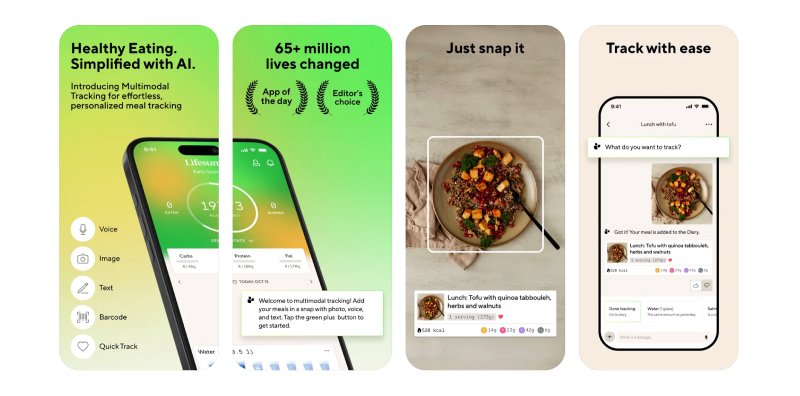
Source: App Store
In line with this, Lifesum’s current slogan — “Healthy Eating. Simplified with AI.” — reflects how deeply the app has embraced artificial intelligence.
- Multimodal Tracking: Offers multiple AI-powered ways to log meals, including text, voice, and image recognition.
- Food Rating and Insights: Provides personalized recommendations and daily insights based on the chosen meal plan.
Innovation comparison matrix
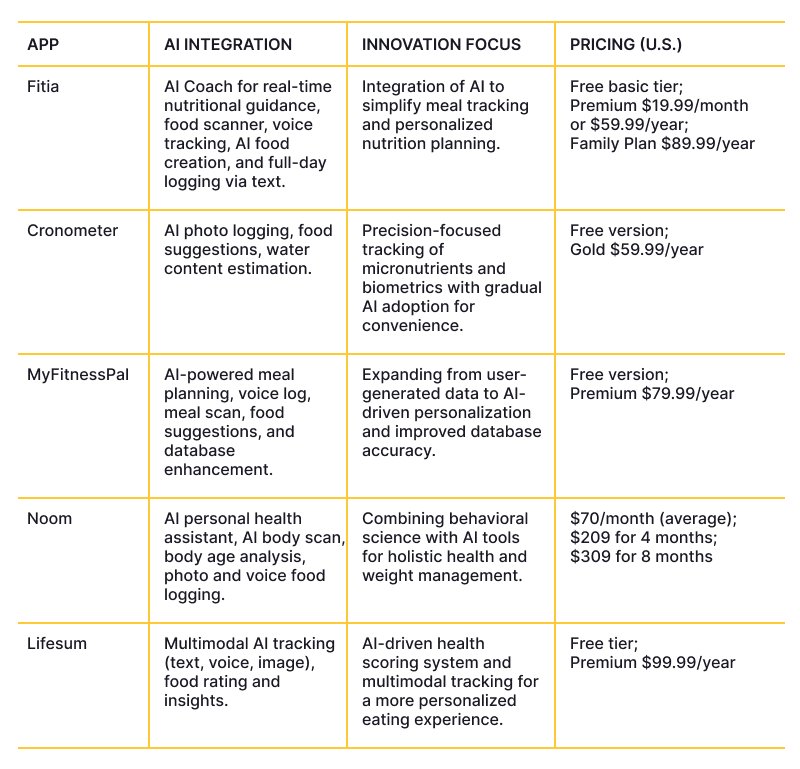
All of these apps have implemented AI, some more extensively than others. What truly sets them apart, however, is that each one first built a solid foundation with a clear value proposition and then used AI to enhance that core strength. Ultimately, the right app for you depends on your specific needs and goals. Consider testing their free versions, if available, to see which one fits you best.
Final thoughts: The future of nutrition technology
With the rapid rise of AI availability to the public, the diet and nutrition app category has experienced an explosive surge in innovation within just a few years. A decade ago, most top players relied on basic calorie-counting features. Today, it’s remarkable to see how once ground-breaking tools like photo, voice, and text tracking are quickly becoming standard tools. Now, every leading app must find new ways to leverage AI and stand out from the competition.
As the AI industry continues to release increasingly advanced models to the public, we can expect a much deeper level of implementation. This will take diet personalization to an astonishing degree of detail, factoring in micronutrient intake, biometrics, sleep patterns, activity levels, work stress, and many other variables, all while considering food availability, personal preferences, and how much time users can dedicate to optimizing their nutrition.
From there, we move into educated guessing. AI nutrition coaches could become more human-like, featuring realistic voices or even avatars, constantly updated with the latest knowledge in nutrition, psychology, and behavioral science. Photo logging could reach near-perfect accuracy, and nutrition apps could synchronize seamlessly with all of a user’s smart wearables and devices, creating a complete health ecosystem around them. The sky is truly the limit.